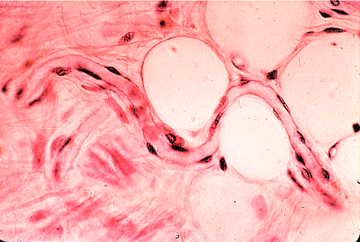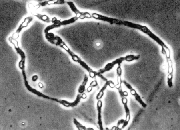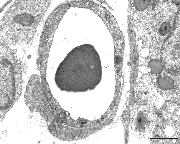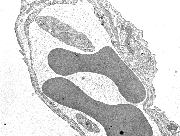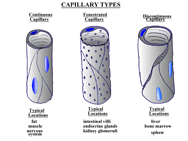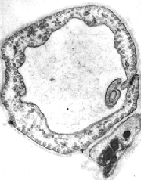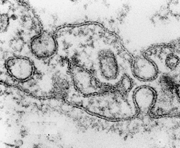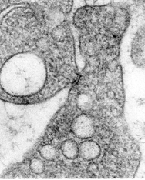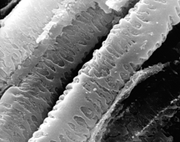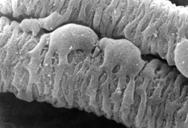Capillaries |
Capillaries are the smallest of blood vessels. Their walls consist of a single layer of endothelial cells and the smallest have a single endothelial cell wrapped around to join with itself. These permit a single red blood cell to pass through them but only by deforming itself. Capillary endothelial cells vary in structure depending upon the tissue type in which they are found. Continuous capillaries are the most common (i.e.muscle, fat, nervous tissue) have no transcellular perforations and the cells are joined by tight nonpermeable junctions. Fenestrated capillaries have intracellular perforations called fenestrae are found in endocrine glands, intestinal villi and kidney glomeruli and are more permeable than continuous capillaries. Discontinuous capillaries have open spaces between endothelial cells are very permeable and sometime permit the passage of blood cells between them.These are found in the liver, spleen and bone marrow. Blood vessel endothelial cells have membrane-bound vesicular structures in their cytoplasm. These most likely transport large solutes between the blood to the tissue spaces by a mechanism that is still unclear. A cell type which partially encircles most capillaries but which often goes unnoticed in transmission EMs is the pericyte. This shares a common basement membrane with the endothelial cell and and probably plays a role in capillary permeability and pressure.
